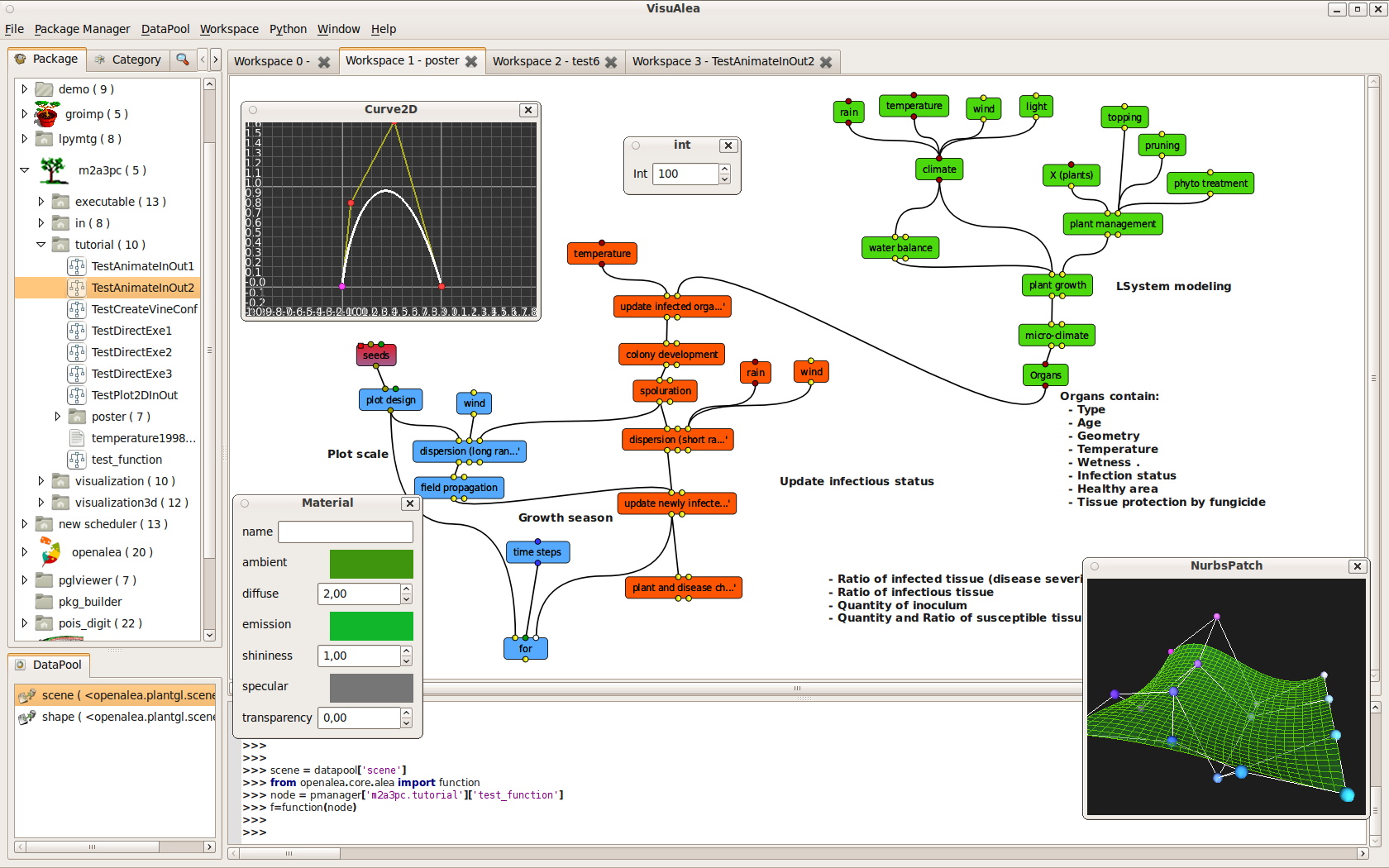Section: Software and Platforms
OpenAlea
Participants : Frédéric Boudon, Christophe Godin, Yann Guédon, Christophe Pradal [coordinator] , Christian Fournier, Julien Coste.
This research theme is supported by the Inria ADT Grant OpenAlea 2.0 and by a Agropolis RTRA Grant named OpenAlea.
OpenAlea[10] is an open source and collaborative software project primarily dedicated to the plant research community. It is designed as a component framework to dynamically glue together models from different plant research labs, and to enhance re-usability of existing models in the plant research community.
The architecture of OpenAlea is based on a component architecture. It provides a set of standard components (OpenAlea.Stdlib), a package manager to dynamically add and retrieve new components, and a port graph data-structure to compose models by interconnecting components into a data-flow.
Visualea provides a visual programming environment, used by scientists to build new model interactively by connecting available components together through an easy-to-use graphical user interface.
In 2012, one major release was done : Openalea 1.0. The following progresses were accomplished:
-
Develop and extend OpenAlea and Visualea:
-
The standard library of components has been extended with useful scientific packages such as a flexible data plotting package (Openalea.Pylab), 2D and 3D image manipulation (Openalea.Image) and linear algebra operations (Openalea.Numpy).
-
Several models of computation have been implemented on the data-flow data-structure to enable discrete event simulation and control flow inside OpenAlea.
-
-
-
The first OpenAlea Workshop have been held in Montpellier and has been attended by more than 60 scientists. A scientific board has been defined to manage the development and diffusion of OpenAlea. It is composed by 12 scientists.
-
StandAlone binary installers have been released on Windows and Mac to ease the installation of a large number of packages without relying on a web server. A Ubuntu repository has been set up on Launchpad.
-
A continuous integration server has been set up To test the reliability of all the components after every commit.
-
The OpenAlea project is hosted at the Inria gforge (link http://openalea.gforge.inria.fr ). The web site is visited by more than 370 unique visitor each month; 650000 web pages have been visited and the different available components of OpenAlea have been downloaded more than 520,000 times during the last two years. OpenAlea is the first project at Inria Gforge in term of number of downloads and of page views.
-


